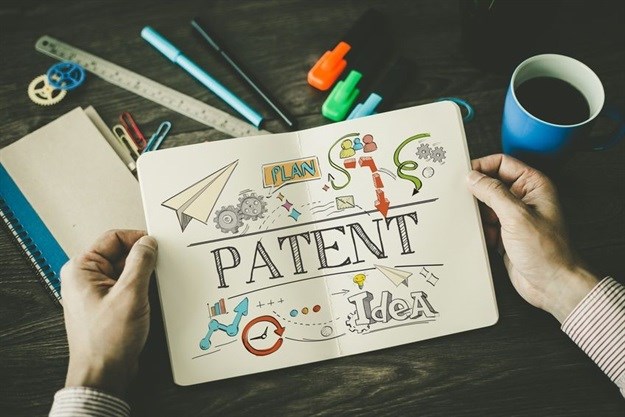Construction of Claims – Patent Registration in India
Construction of Claims
Patent is an inventive concept which consists of a unique and novel procedure to be followed in invention. Patent application is accept when the applicant filed the patent claims and patent specification. Claim is considered as a heart of the patent application. It will protect the rights of the patentee. Patent Registration has been done by the Registered Patent attorney and also he is eligible for file a design patent application.
Now I shall deal with the plaintiff’s attempt to show infringement and how the same does not discharge the onus of proof one by one. The plaintiffs have attempted to establish infringement on the basis of what has been written by the defendant on its packaging of the drug which is Erlotinib Hydrochloride and what has been declared by the defendant before the authority. It has been contended that the defendant has not made any reference any Polymorphic version of the compound anywhere on the product and therefore this court should find that the onus as to establishment of the infringement to be proved. I think the existence of the said fact by itself does not establish infringement. It must be remembered that the present claims of the plaintiffs is promised on the right of the plaintiffs in the patent of a chemical compound, therefore the infringement of the same has to be established by corresponding chemical analysis of the defendant’s product and not by mere comparison of the labels, strips or what is written thereon to show that there is an infringement. The said description of the defendant’s product nowhere indicates as to which from of the compound, the defendant is making. The defendant has categorically stated, it making Polymorph B version which corresponds to the Tarceva product, to which the plaintiff has not lead any direct evidence, therefore the mere comparison of trade description, label, drug approvals are insufficient to arrive at the conclusion as to infringement of what is claimed in the suit patent.
If at all there is a material on record which suggests that defendant is making generic version of Tarceva product, even then the same by itself nowhere establishes infringement. This is due to the reason that the defendant has been able to show by x-ray diffraction as to what contained in what contained in Tercenva is the Polymorphic version B of the compound. Thus, again the plaintiff’s argument on this count fails and cannot enable this court to assume infringement in the manner stated by the plaintiffs due to the reason that in the prayer, the plaintiffs sought injunction against the defendant in any manner infringing the legal rights in the drug Tarceva. In paragraph 11 of the plaint, it is specifically stated that the plaintiffs are manufacturing the drug under the process of patented product. The said statement apparently untrue as it is evident as per material available on record that they are marketing the product under new version of Polymorph B for which the plaintiffs have patent registration in India.
The plaintiff’s contention that the defendant has not mentioned about the polymorphic B version of the compound at any time earlier by placing reliance upon drug approvals, patent applications and all other places in tabular form to show the alleged admissions. The answer of mine to this contention would be again that the plaintiffs have to first establish infringement on the basis of what is contained in the defendant’s product and not what the defendant claims to be doing. The defendant might have been inspired by ongoing drug of the plaintiffs in the market which in fact the defendant is doing as the defendant stand before press and media is clear that the defendant is intending to launch the generic version of Tarceva Drug. In case, the plaintiffs were able to prove before Court that the defendant’s products are not Polymorph B version but under the patented product of suit patent, the position would have been different. However, until the plaintiff explains who is a patentee and is under duty to explain what exactly is contained in the drug and how the patent is being infringed in the said product by taking from what is contained in drug, the defendant cannot be imposed the responsibility of remaining in non-denial would come when the plaintiffs explain everything as to constitutes of the plaintiff’s drug and whether the same corresponds with the suit patent which is clearly missing in in the instant case. Therefore, the said alleged admissions are inconsequential for the purposes of discharge of the plaintiff’s onus of the proof. Further, the admissions which the plaintiffs are setting up are not the ones which are clear and unambiguous. There are chains of the facts which are to be established in order to show an infringement. Mere identification of the chemical structure of the compound by the witness and reading along with the fact that earlier in the written statement there was no reference of Polymorphic B version made by the defendant and to say that would lead to clear admission on the part of the defendant that what the defendant is actually making is the drug under the suit patent will not actually establish infringement. This more so, when the defendant is disputing such position till date in the arguments as well as there is a reference of the Polymorphic versions in the counter claim. In these circumstances, the admissions which the plaintiffs are setting up are not clear and unambiguous to draw such interference. This reasoning is in addition to the finding above which is more crucial that the plaintiffs being a patentee have to inform fully as to what contained in the drug and whether the same corresponds with the suit patent.

The argument of the plaintiffs that one compound has the ability to remain in two or more Polymorphic forms by stating that the compound will remain the same and its form shall change, the said argument again does not explains as what was the role of the reactants while arriving at the Polymorphic version B and how the said properties of the products under both the polymorph are same. The positive evidence should come from the plaintiffs that the role of such reactants is inconsequential. But that is not so done in the present case, thus, the mere explanation that the compound will remain the same and only the alignment will change by citing the example of the apple is inconvincible in absence of the deposition specific to the instant case. I think chemical science is not so easy to propound a theory like this which is that the substance shall remain a substance but only alignment changes rather the change in alignment of the chemicals make lot of difference in the products, their forms, characteristics. Learned counsel for the plaintiffs himself asked that the question in cross-examination from defendant’s witness that diamond and graphite are two polymorphic versions of the carbon in cross examination. If the answer is in affirmative, then even if the plaintiffs have obtained the patent of the carbon and thereafter attempted to obtain the patent diamond separately by showing the working upon the carbon, the infringement has to be measured from by comparing the rights under the diamond patent vis-à-vis the product of the defendant and not by simply placing relying on the fact that the plaintiffs have obtained carbon patent and as the diamond contains carbon, therefore it will infringe carbon patent. This is due to the reason that the diamond is different in form, composition and its features than the mere carbon. Therefore, unless the plaintiffs explain from the prospective construction of the claim that the inventor intended at the time of framing of the patent to include such substance be it diamond in an example or Polymorphic B form of the suit patent in the suit patent, the said onus of the plaintiffs is not discharged. In the present case, the plaintiffs have not adduced any positive evidence to show the role of the major or minor reactant. On the Contrary, the US’221 patent specification reveals that there are number of the steps involved in arriving at the Polymorphic version B, therefore, the argument of the plaintiffs that the compound patent will take care of the Polymorphic version in absence of the positive evidence is rejected.

True, it is that the court has to strictly follow what is claimed in the invention and compare it with the product which is alleged to the infringing the patent. But the said rule of construction is not without an exception. They may arise certain cases where the product which is alleged to be infringing does not completely corresponds to what has been claimed in the patented invention of the product. The product may be seemed to be substantially containing the patented product but also contain some parts or variants other than the same also. The Courts have in those cases developed a different rule of construction of the patent claims and specification which is a slight departure from what has been stated by the plaintiffs in the present case. The courts in such cases have evolved the rule of the purposive construction of the patent claims so that in the cases wherever the need be, the claims in the invention is not construed too narrowly which was never the intention of the inventor and not the purpose of the said invention so that the maximum benefit should be given to the inventor by not interpreting the patent claim in a pedantic manner and giving the same an effect which was the real purpose for which the product was invented in furtherance of the practical approach.
For Patent Registration in India -> Click here
